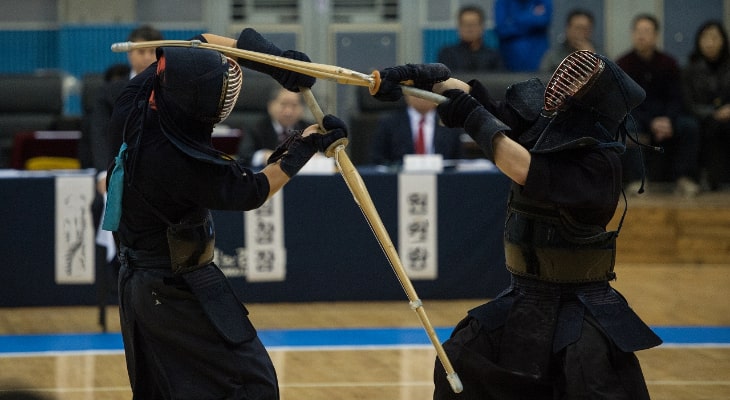
Kendo is a Japanese martial art that pursues technique and mental training at the same time.
Among these many techniques, “cutting back” is considered to be one of the most important.
Switching refers to the action of quickly switching from attack to defense or vice versa, and is a key point in changing the flow of a match.
In this article, we will explain in detail the basic concept of Kishikaeshi, how to effectively practice it, and even how to use it strategically during a match.
In order to deliver useful content to everyone who aims to improve their Kendo techniques, from beginners to experts, we hope that you will be able to deepen your understanding of this technique and use it to improve your performance in actual practice and competitions.
目次
Basics of cutting back in Kendo

Practice method to master the cutback
Effective drills and practice examples
To improve your cutting technique, it is important to start by repeating the basic movements.
First, you start by practicing swinging alone, and the foundation is to acquire accurate Kendo postures and movements.
Next, we will do a drill specific to turning back. For example, a practice called “Ippon Kirigaeshi” involves repeating one attack motion and immediately switching to another.
Through this drill, you will learn how to switch back and forth with both speed and accuracy.
How to strengthen Kiwakaeshi in daily practice
In order to strengthen Kishikaeshi in daily practice, it is effective to actively incorporate Kumite with a partner.
You can actually determine the timing of a switch in Kumite and practice in a way that matches actual combat.
Also, in order to increase reaction speed, it is important to perform drills that require you to react immediately to your opponent’s attacks.
By constantly predicting your opponent’s movements and training to quickly counterattack accordingly, you will greatly improve your counterattack techniques during matches.
Finally, incorporating these techniques into your daily practice and continuously repeating them is the most important part of mastering the technique of Kishikaeshi.

Applications and strategies for cutting back
Timing and benefits of switching back in a match
The best time to switch back in a Kendo match is at the moment when your opponent’s attacks have stopped, or in the short period before your opponent launches an attack.
By making a switch at this timing, you can take advantage of the opponent’s temporary halt in movement.
Additionally, by quickly switching from attack to defense or vice versa, you can outwit your opponent’s predictions and secure a tactical advantage.
By making full use of switching techniques, players can maintain an offensive or defensive posture and allow the flow of the match to proceed at their own pace, which is a huge tactical advantage.
Cutback strategy depending on the opponent
In a Kendo match, it is important to understand the characteristics of your opponent and develop a counterattack strategy accordingly.
For example, if you are facing an aggressive opponent, you can create an opportunity for a counterattack by waiting for the moment when their series of attacks ends and then cutting back.
Additionally, for opponents with strong defenses, it is effective to use Kikkaeshi to shorten the interval between attacks and constantly put pressure on the opponent’s defense.
In this way, you can gain a psychological advantage during a match by devising ways to use cutbacks that suit your opponent’s style and weaknesses.
For this purpose, it is helpful to experience kumite with various types of swordsmen during training and to hone the application of kirikaeshi in various situations.

summary
In kendo, “cutback” is an important technique for quickly switching between attack and defense.
This technique is essential for freely controlling the flow of a match, and is one of the skills a swordsman needs to gain an advantage in a match.
Effective switchbacks require precise timing and strategic application.
- Basic techniques and practice methods : In order to master the basics of Kikikaeshi, it is important to start with practice drills and Ippon Kikikaeshi drills and acquire accurate technique and speed.
- Strategic Application : Timing and reading your opponent’s movements are key to making counterattacks during a match. By determining the end or start of your opponent’s attack, you can take advantageous tactical positions.
- Strategies tailored to your opponent : Adapting to your opponent’s style and making counterattacks tailored to their characteristics will help you control the pace of the match.
The acquisition and application of this technique can be further enhanced by making extensive use of kumite in daily practice and by facing different types of swordsmen.
Cutting back is not just a technique, but it can also be said to be an extremely valuable skill in actual Kendo combat, as it greatly affects the psychological warfare against the opponent.





